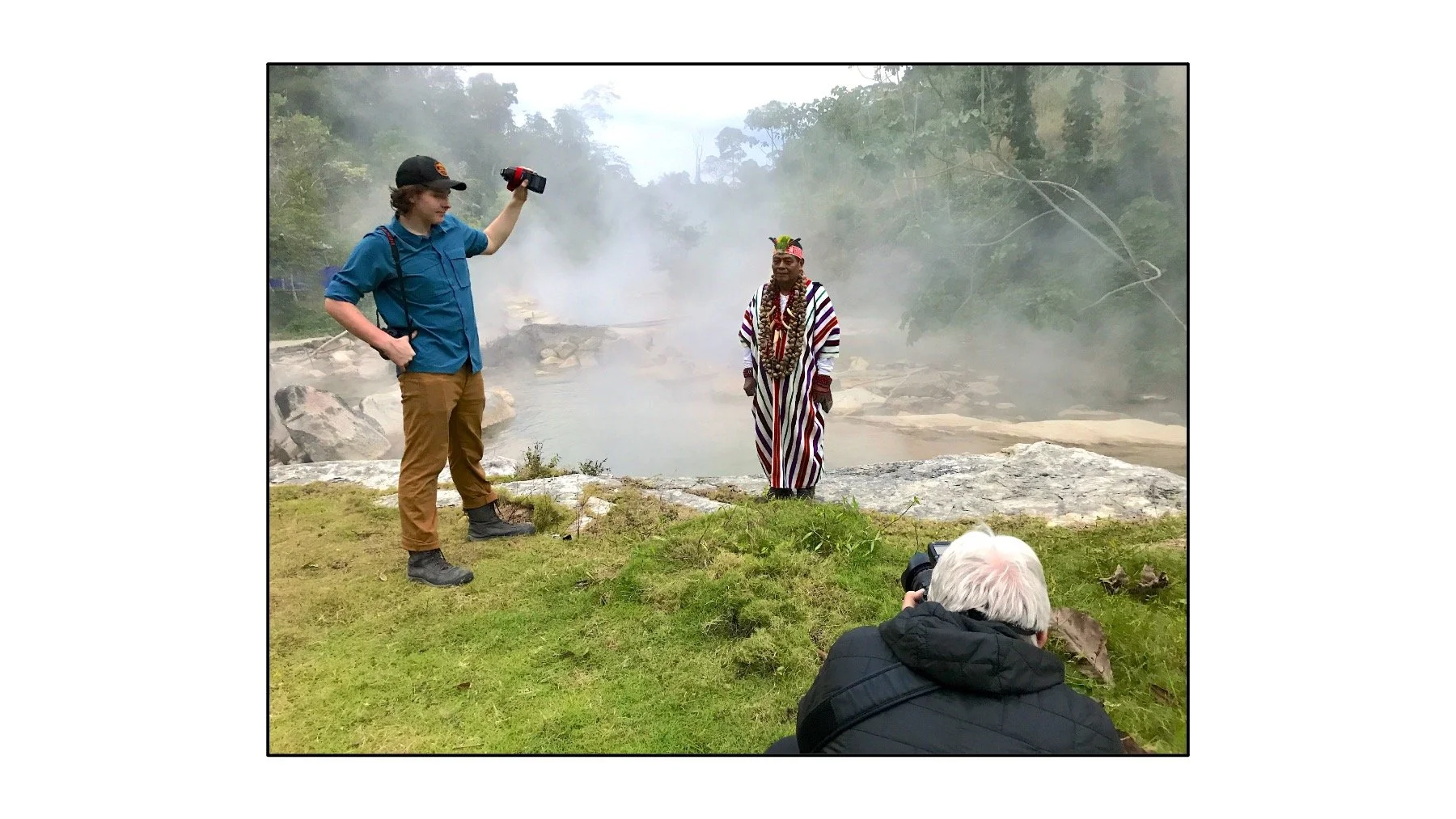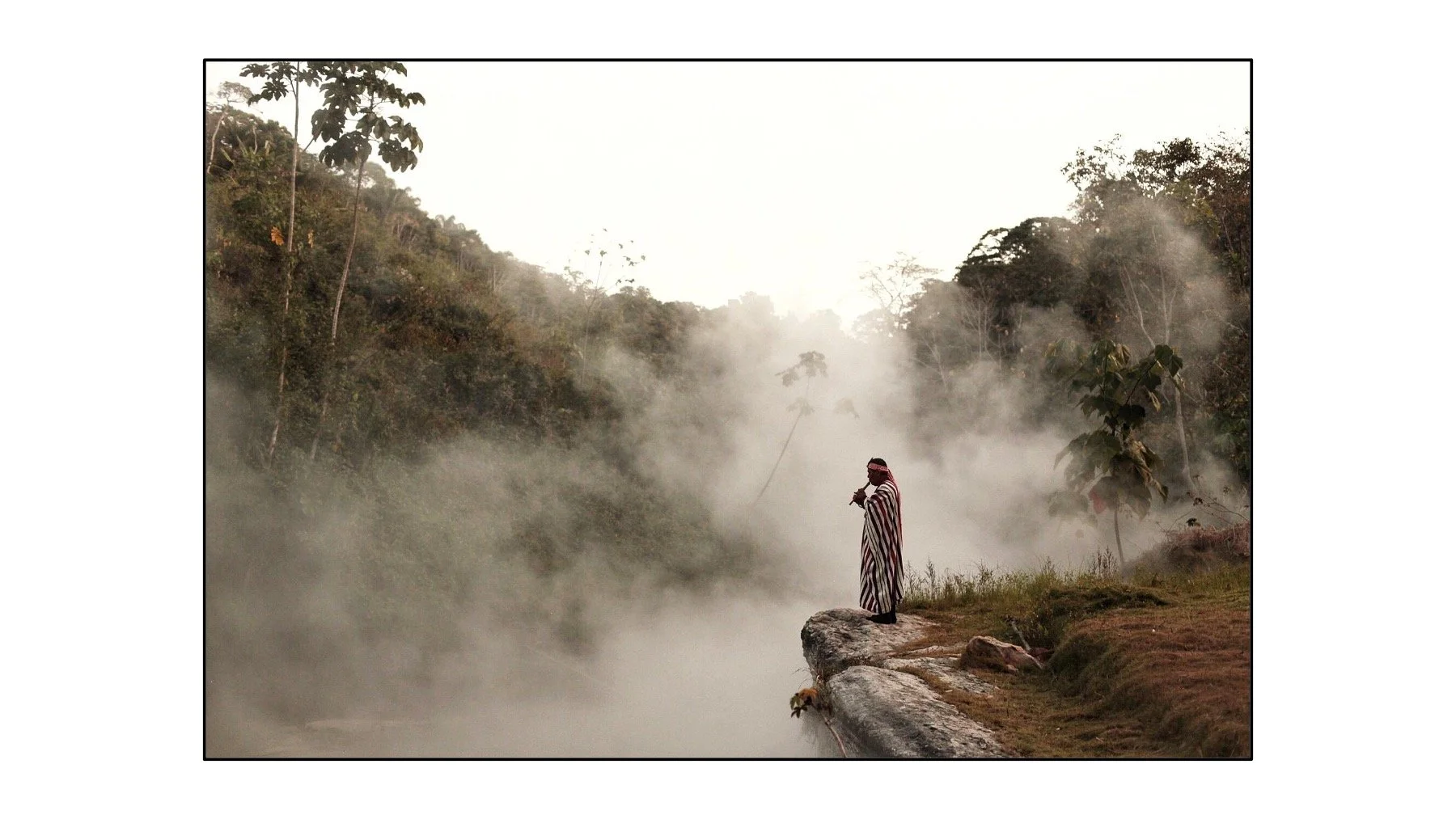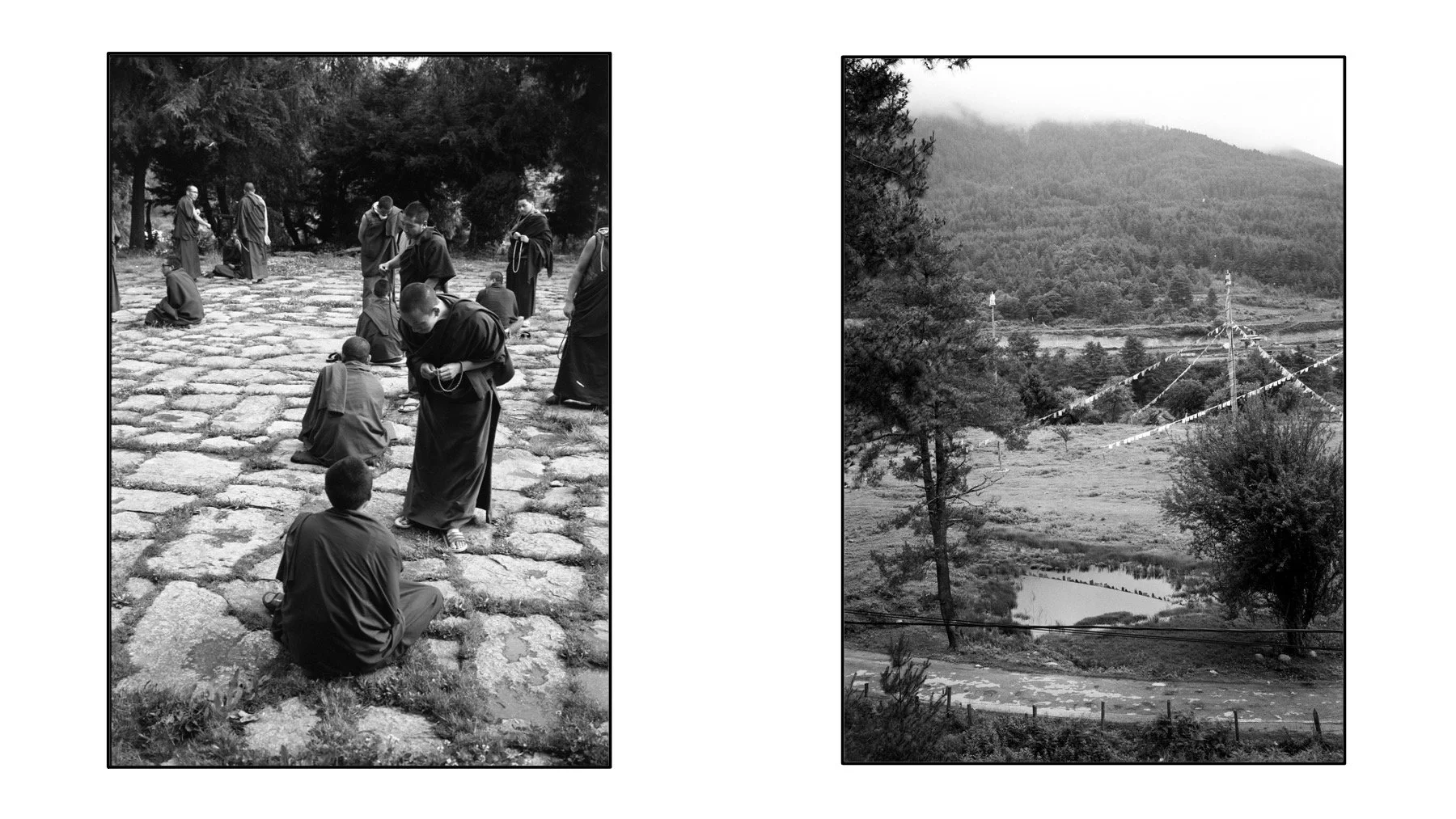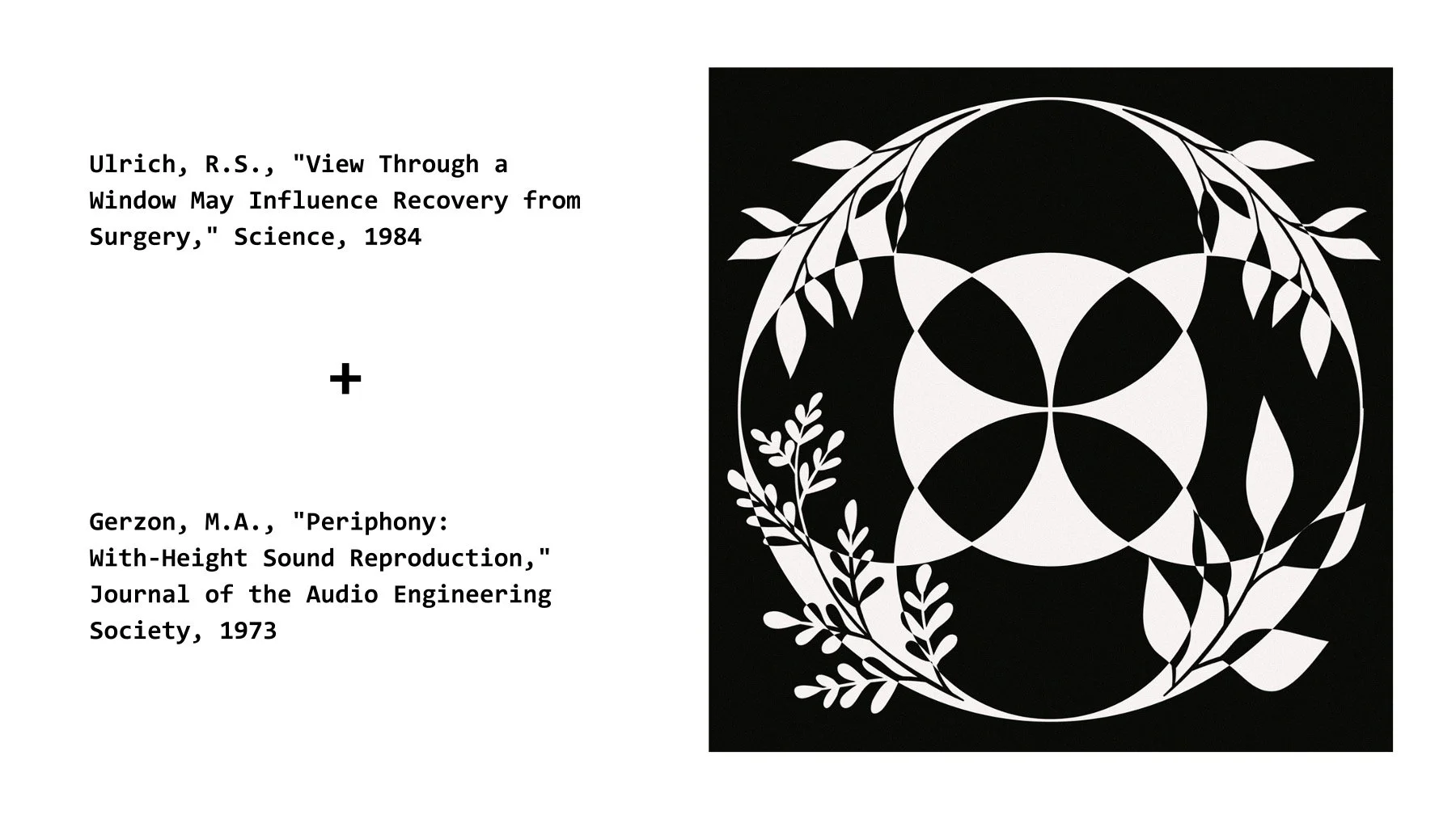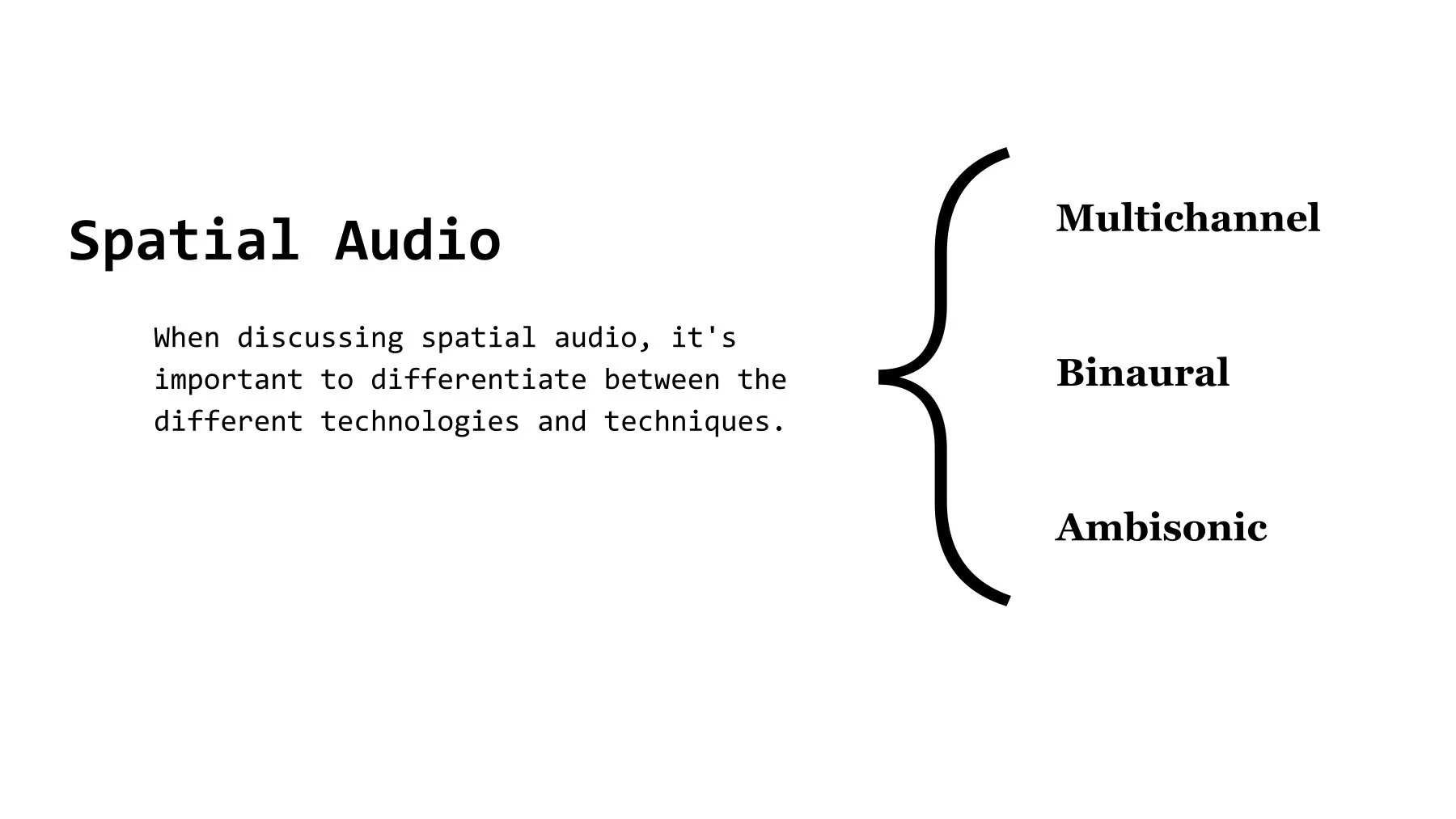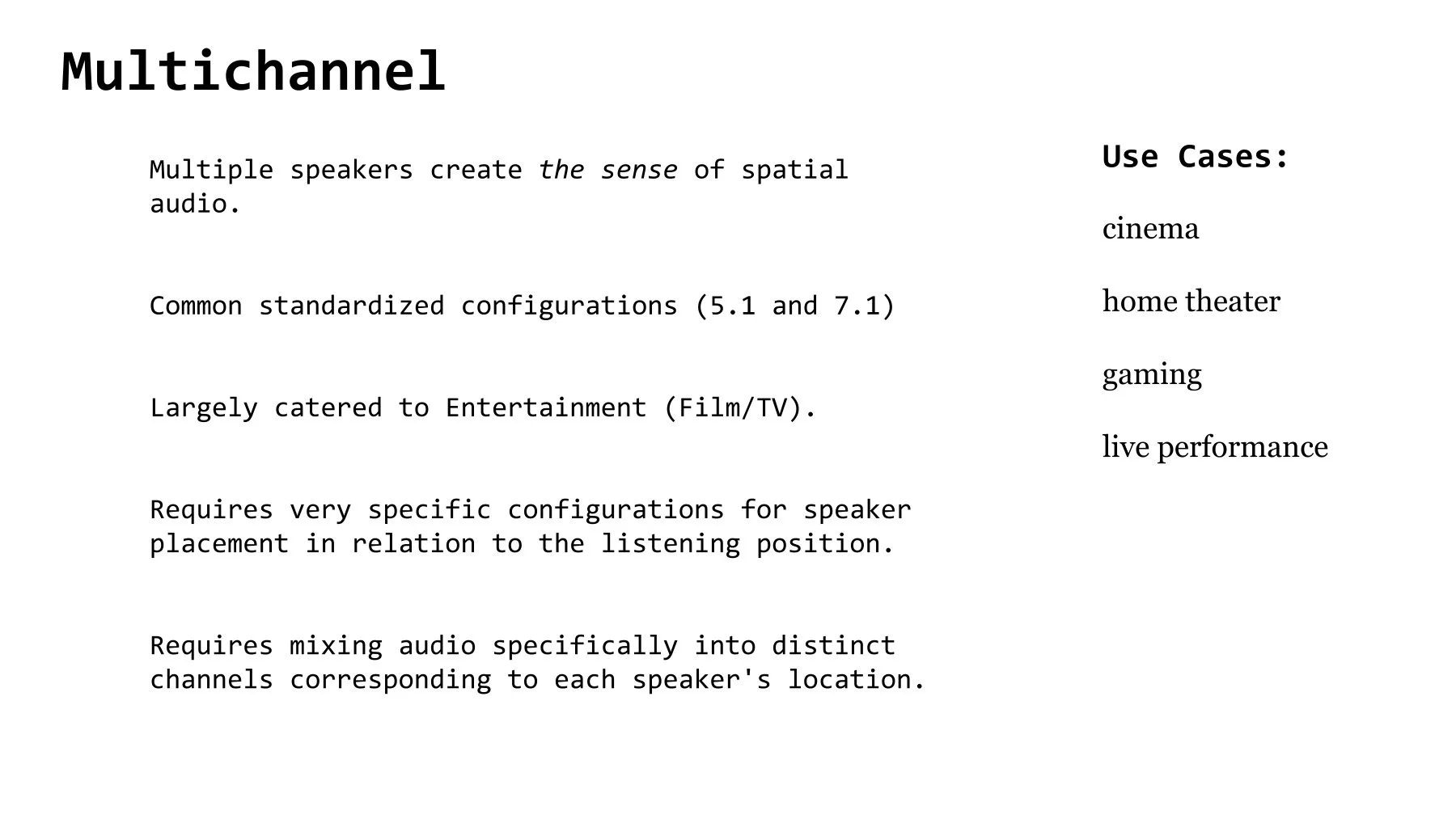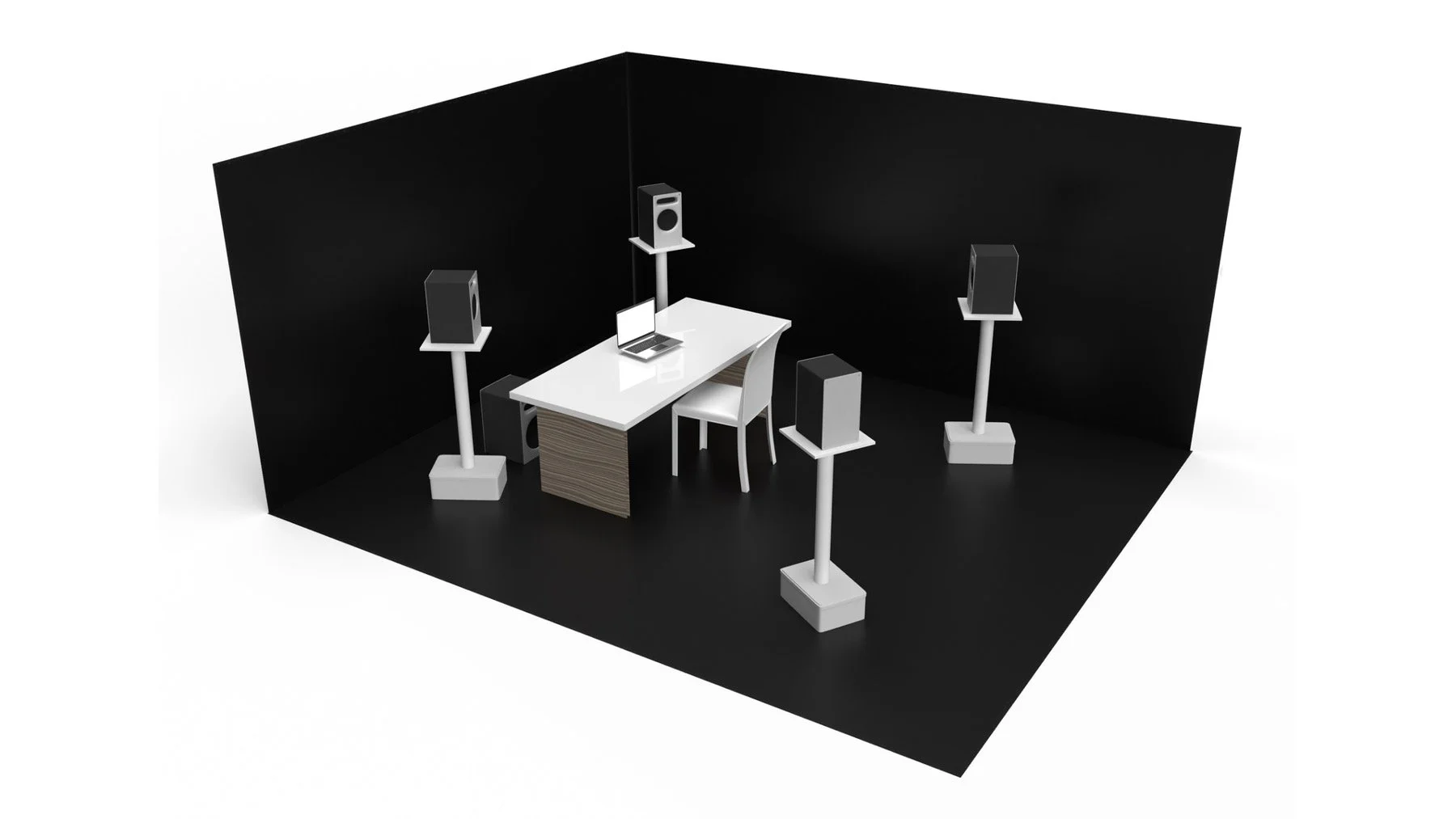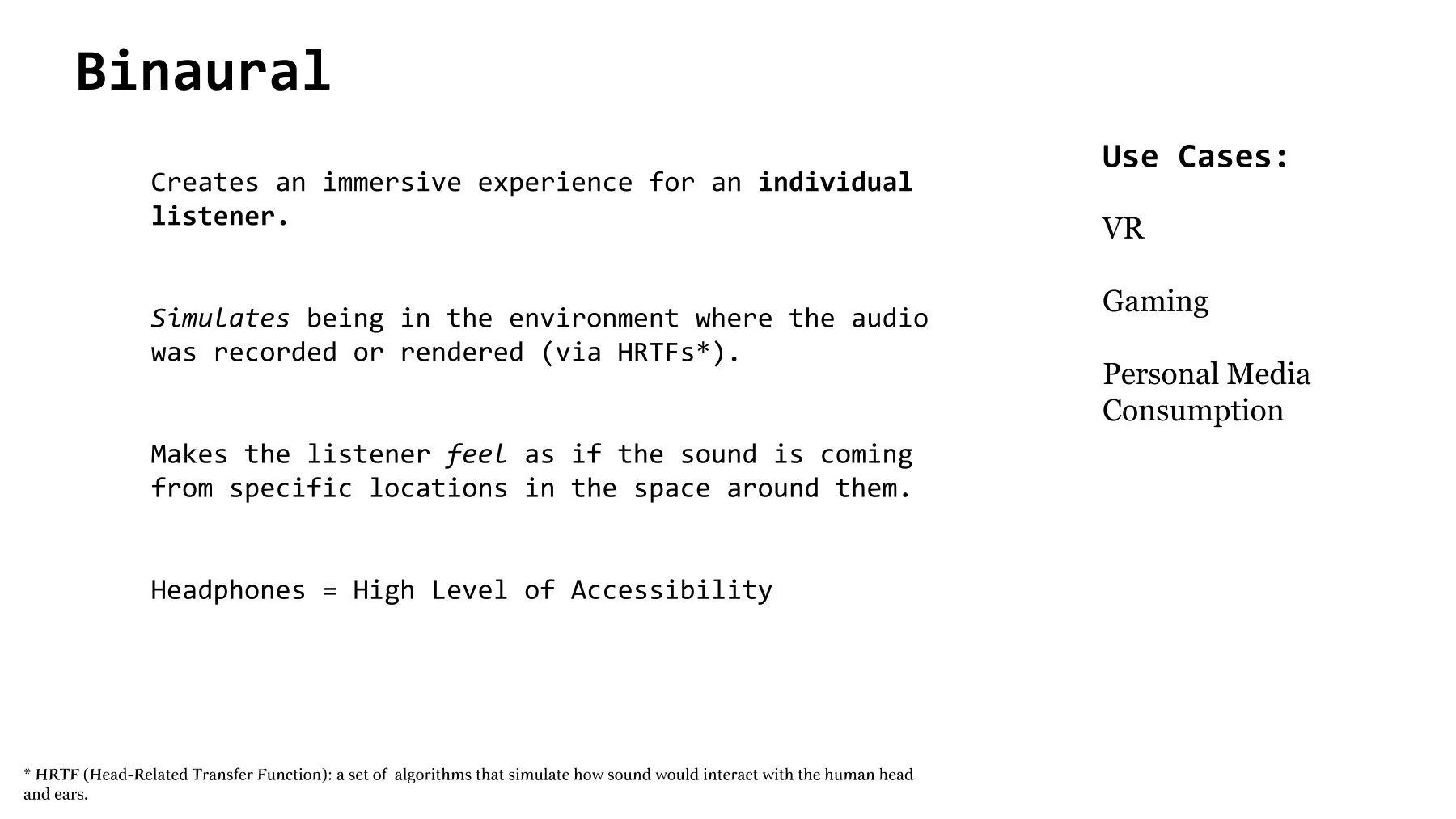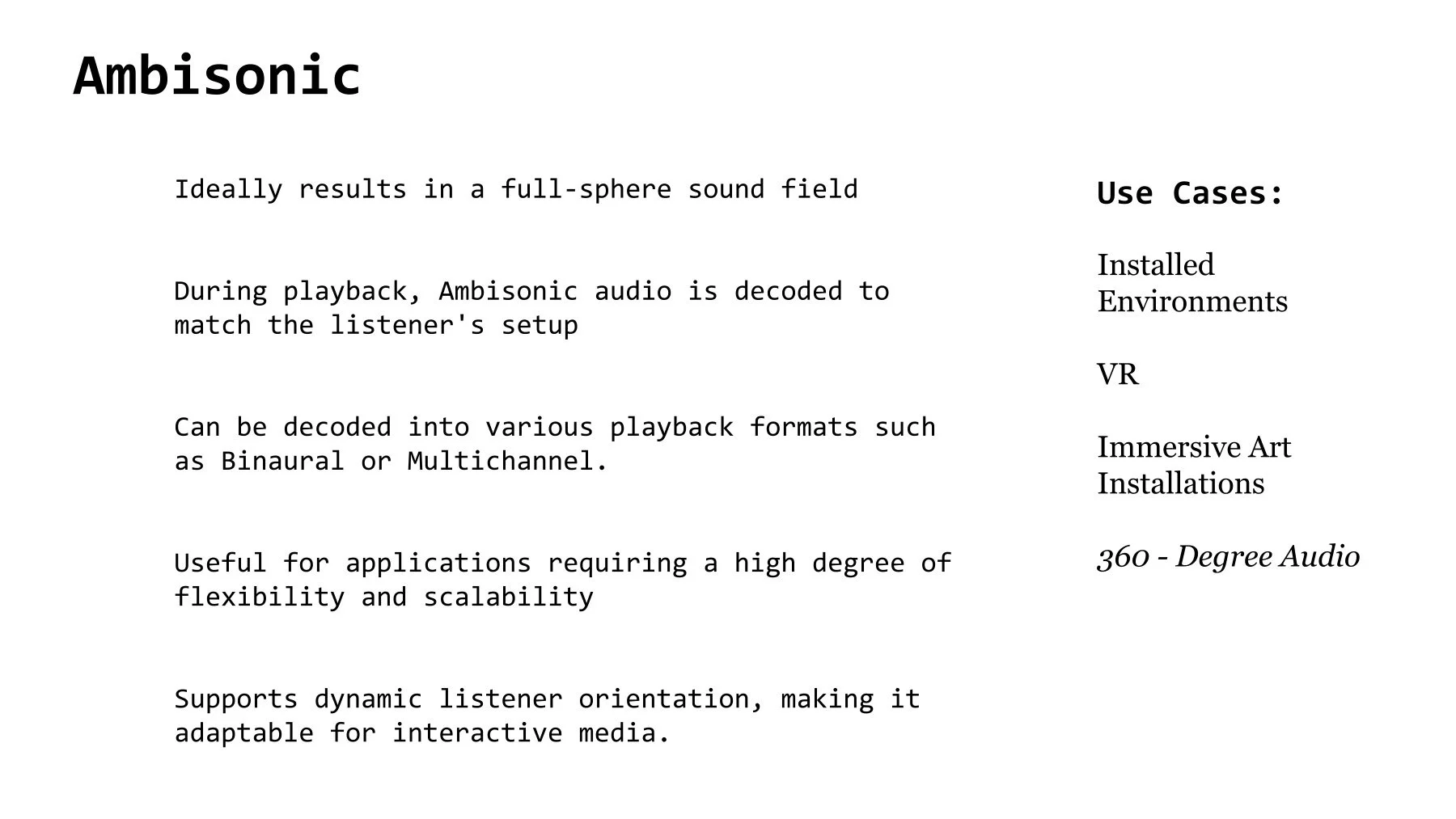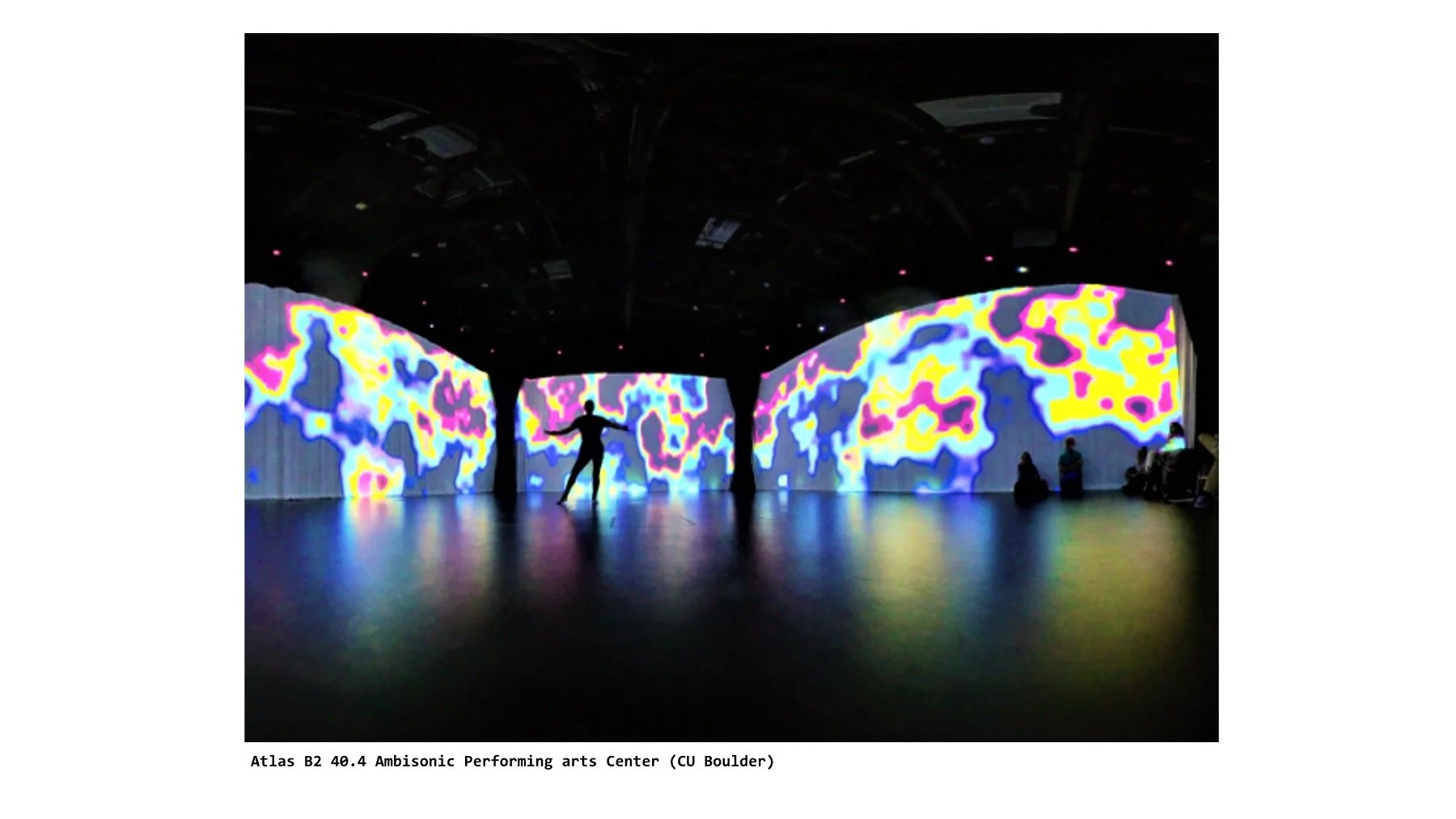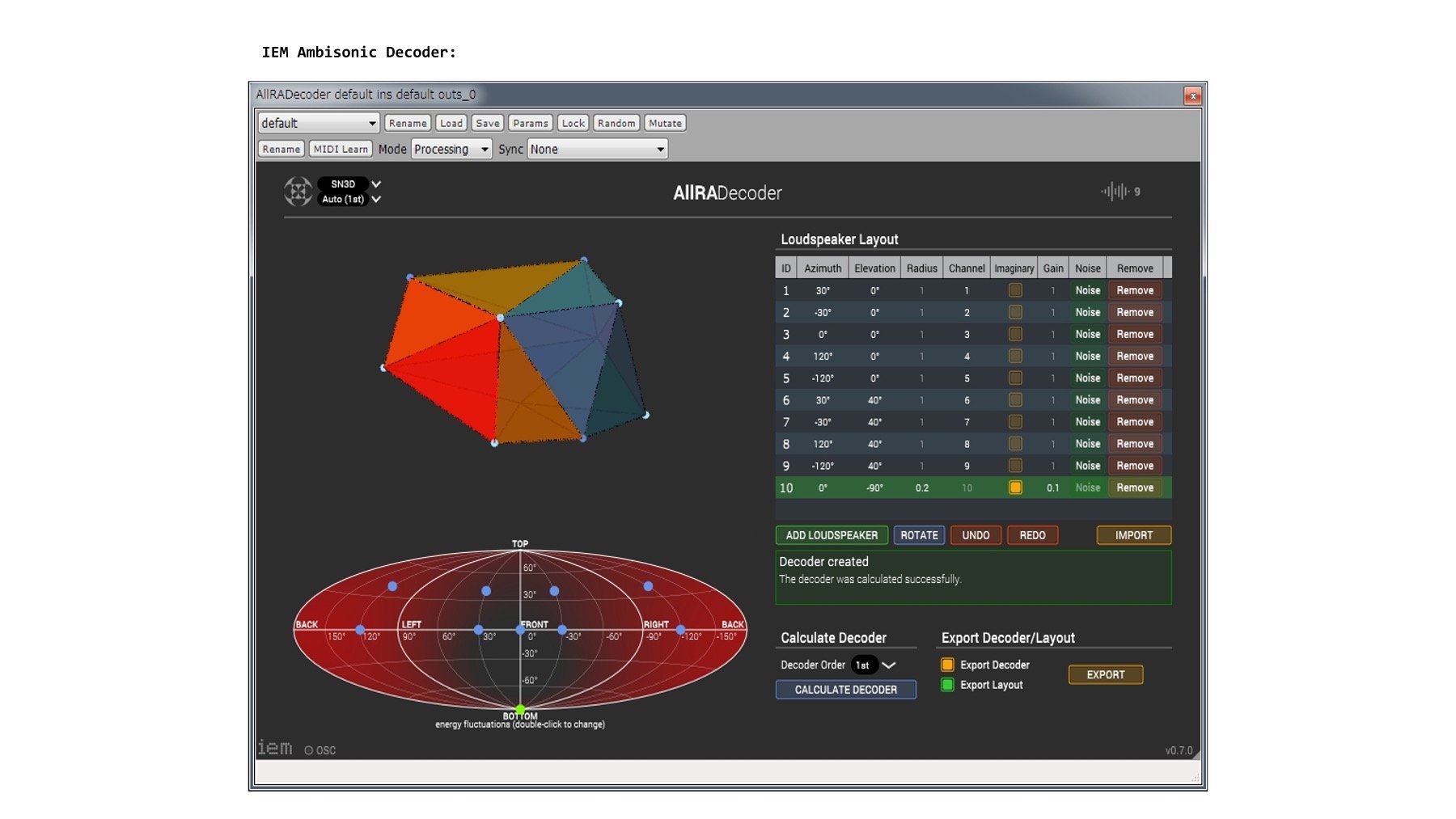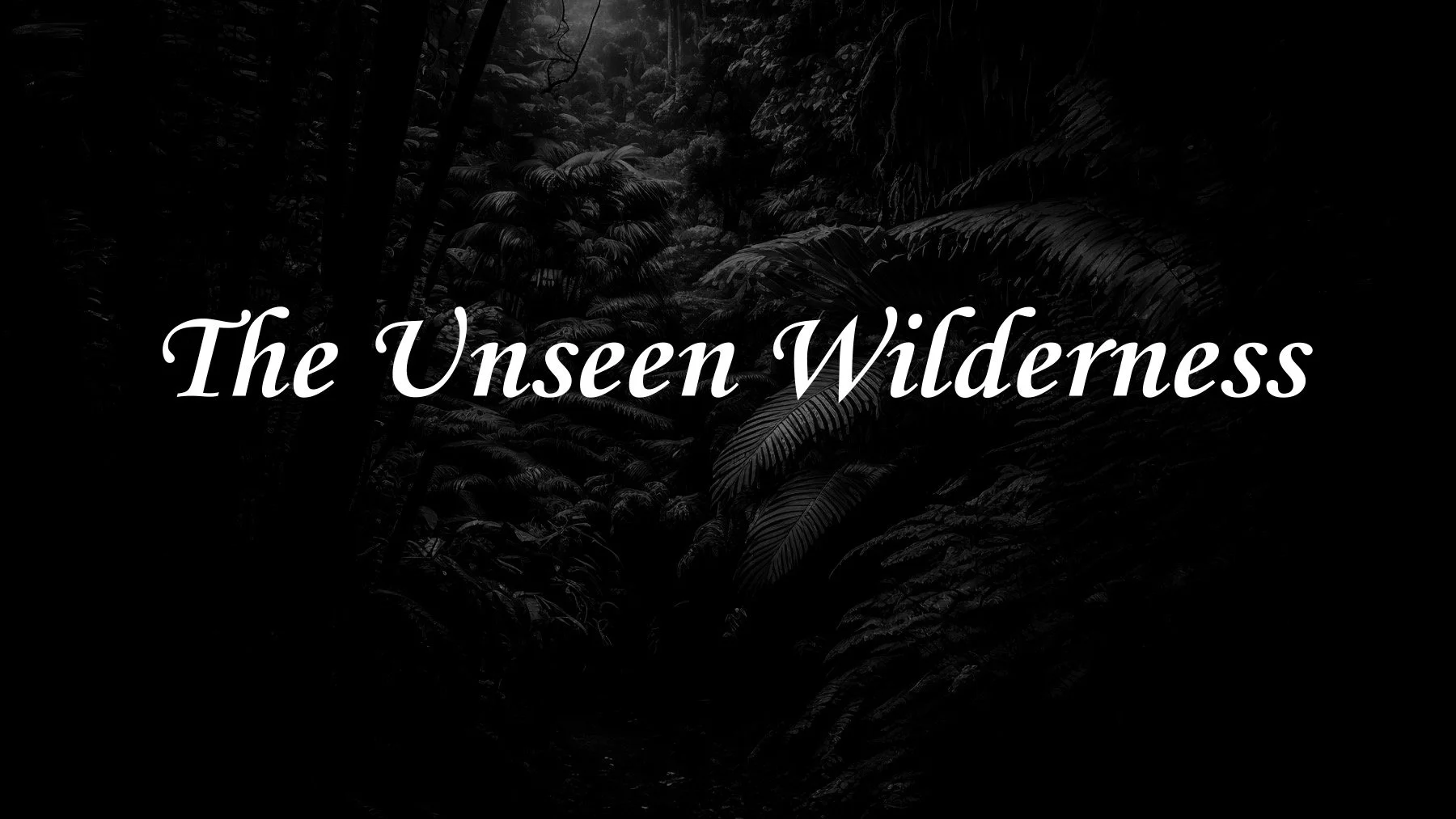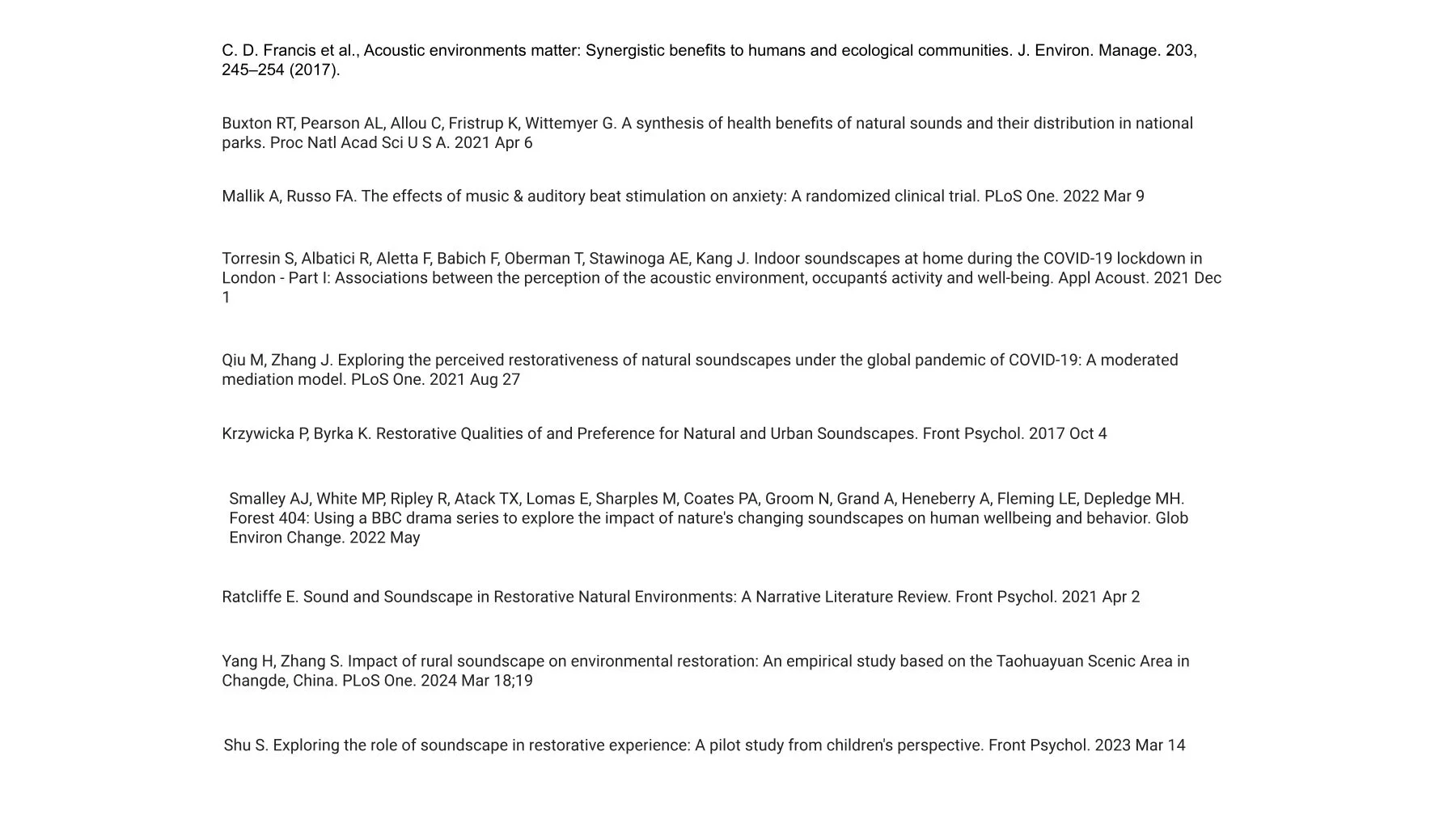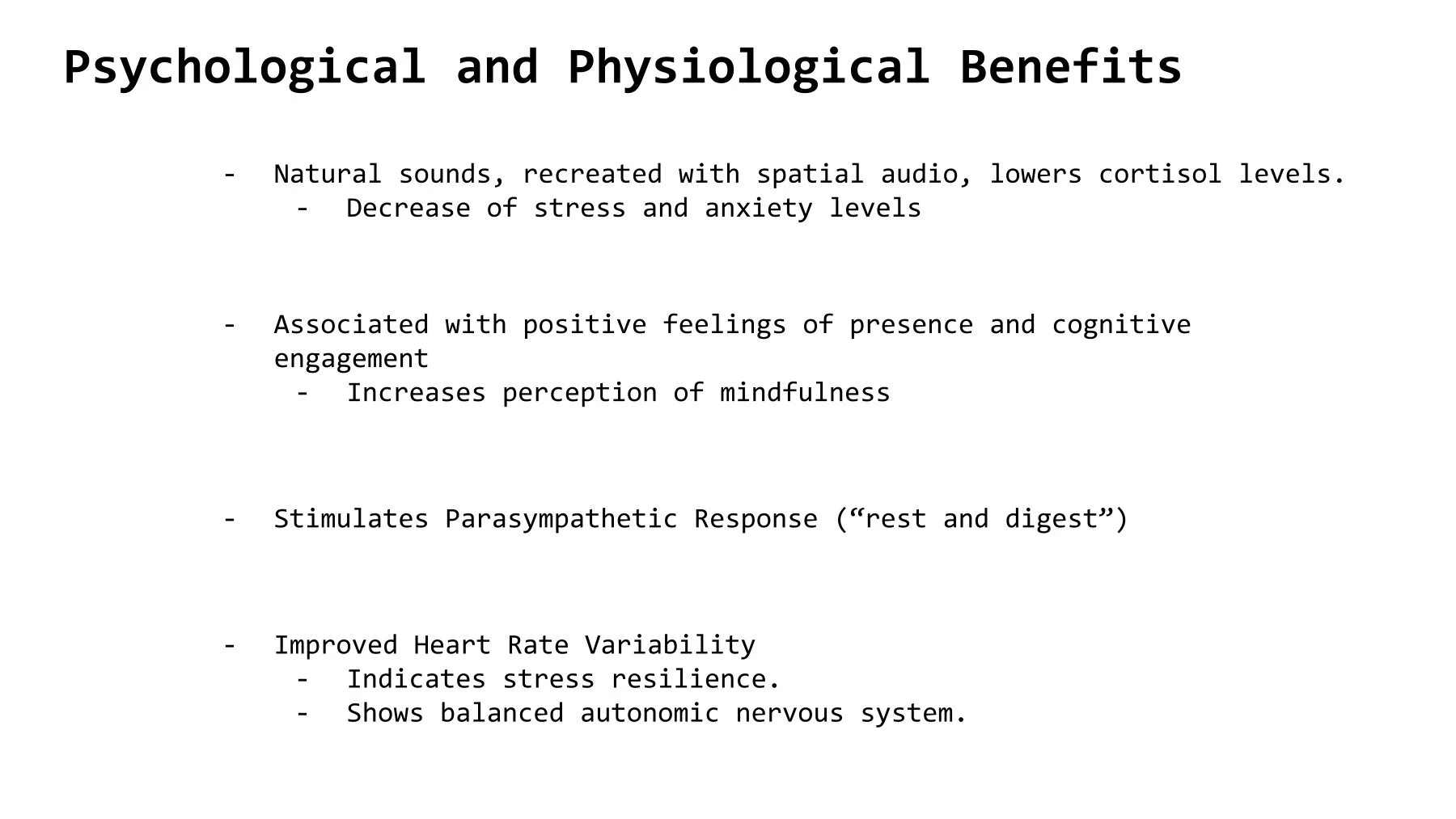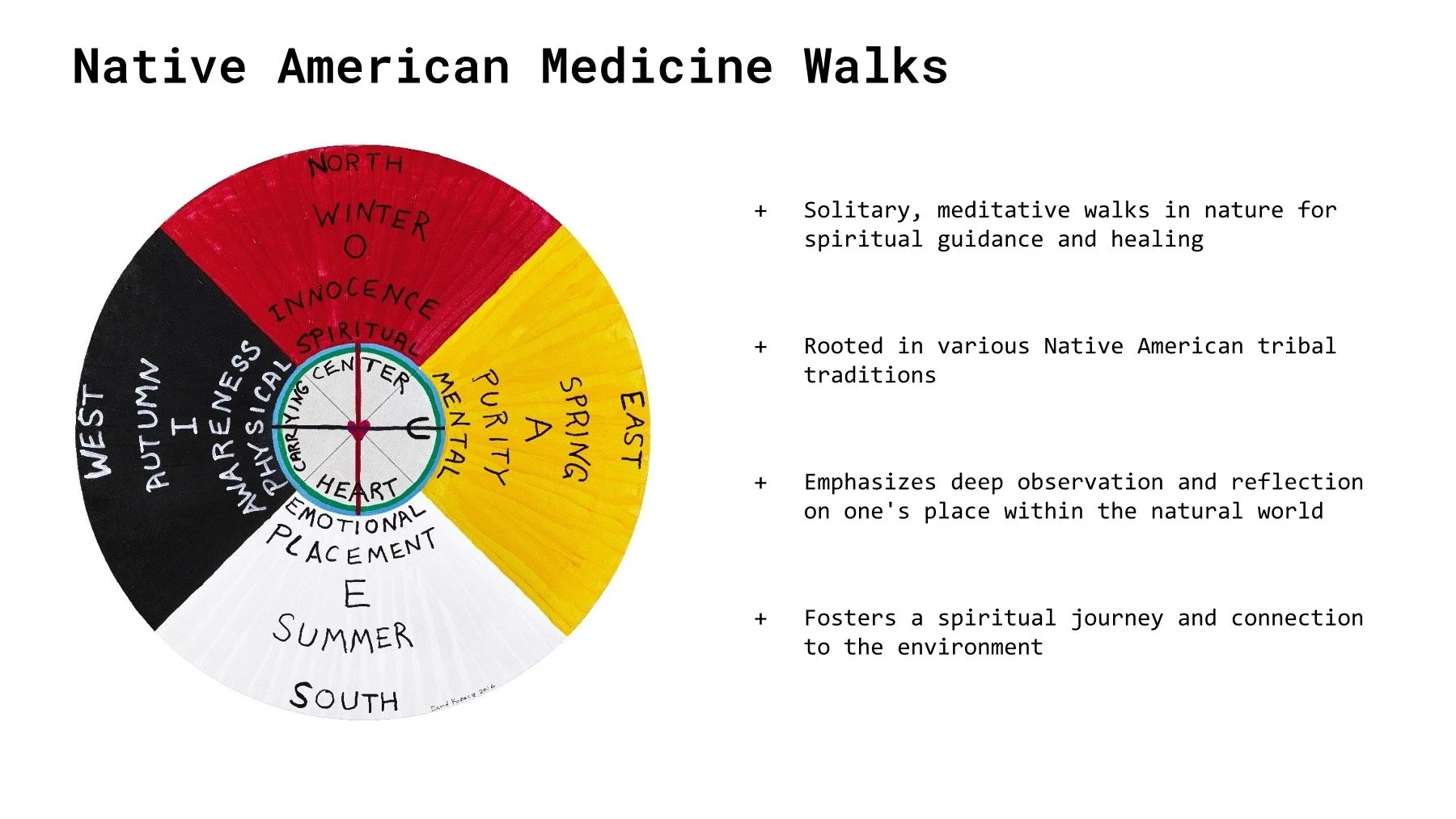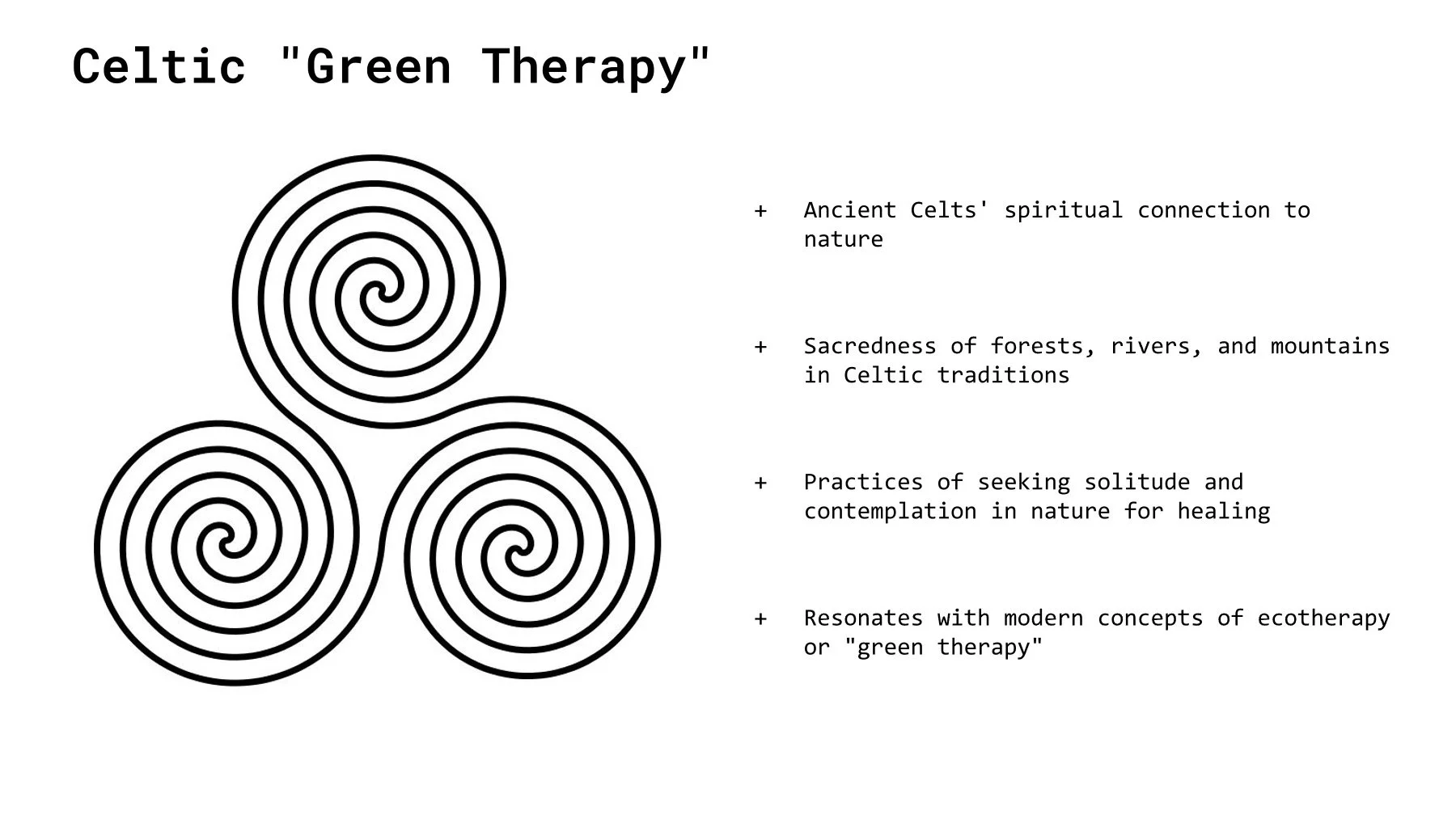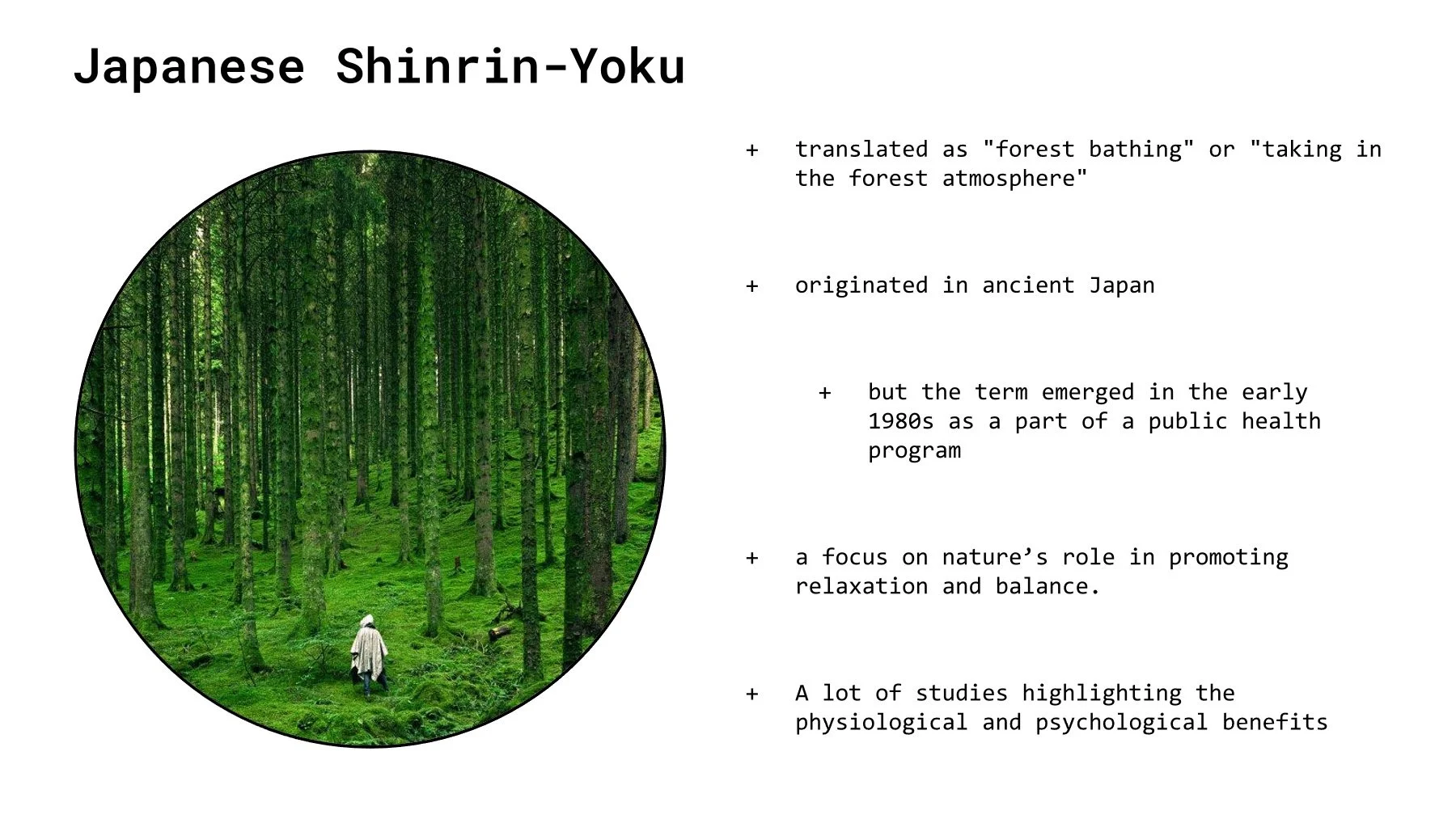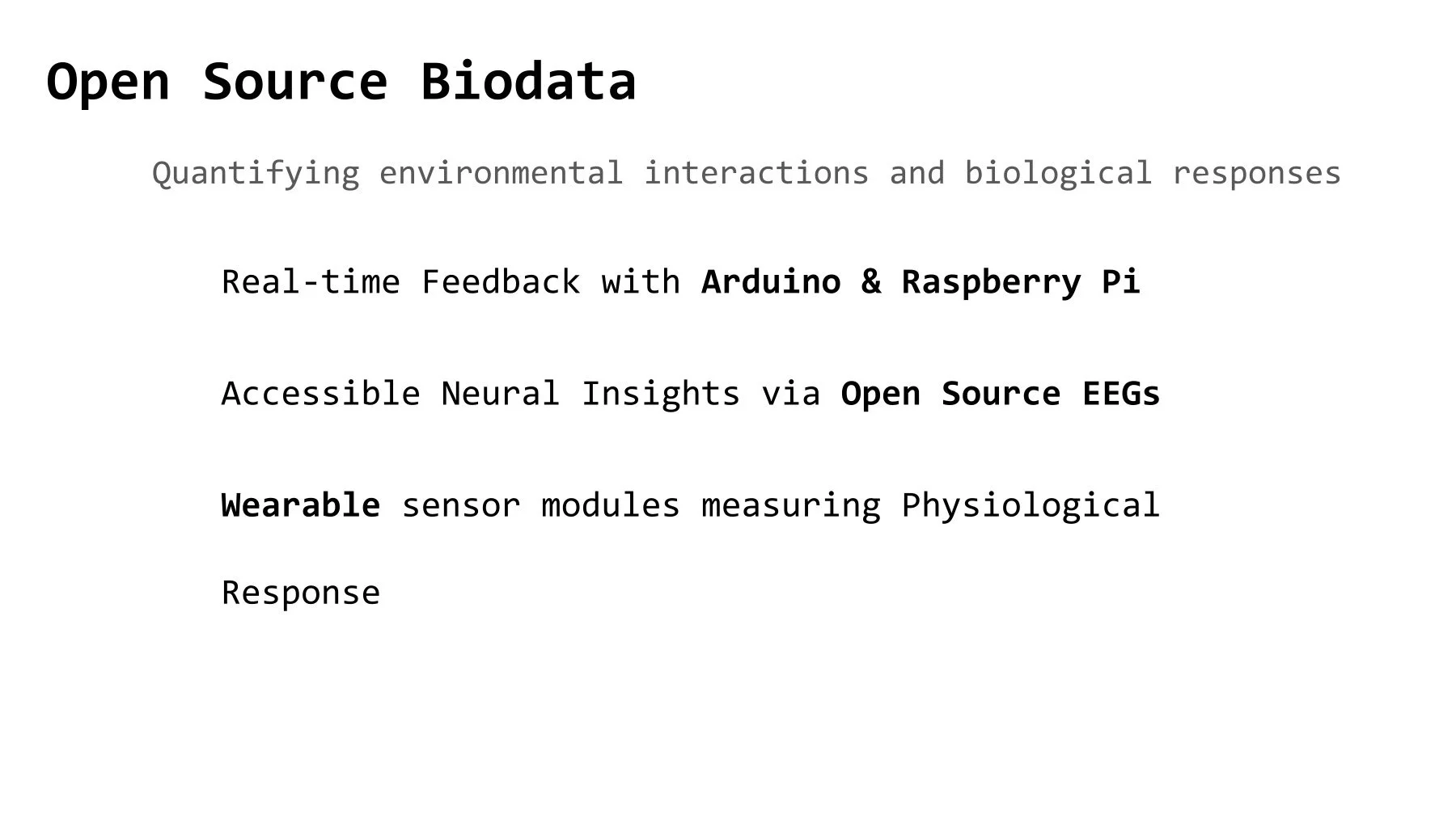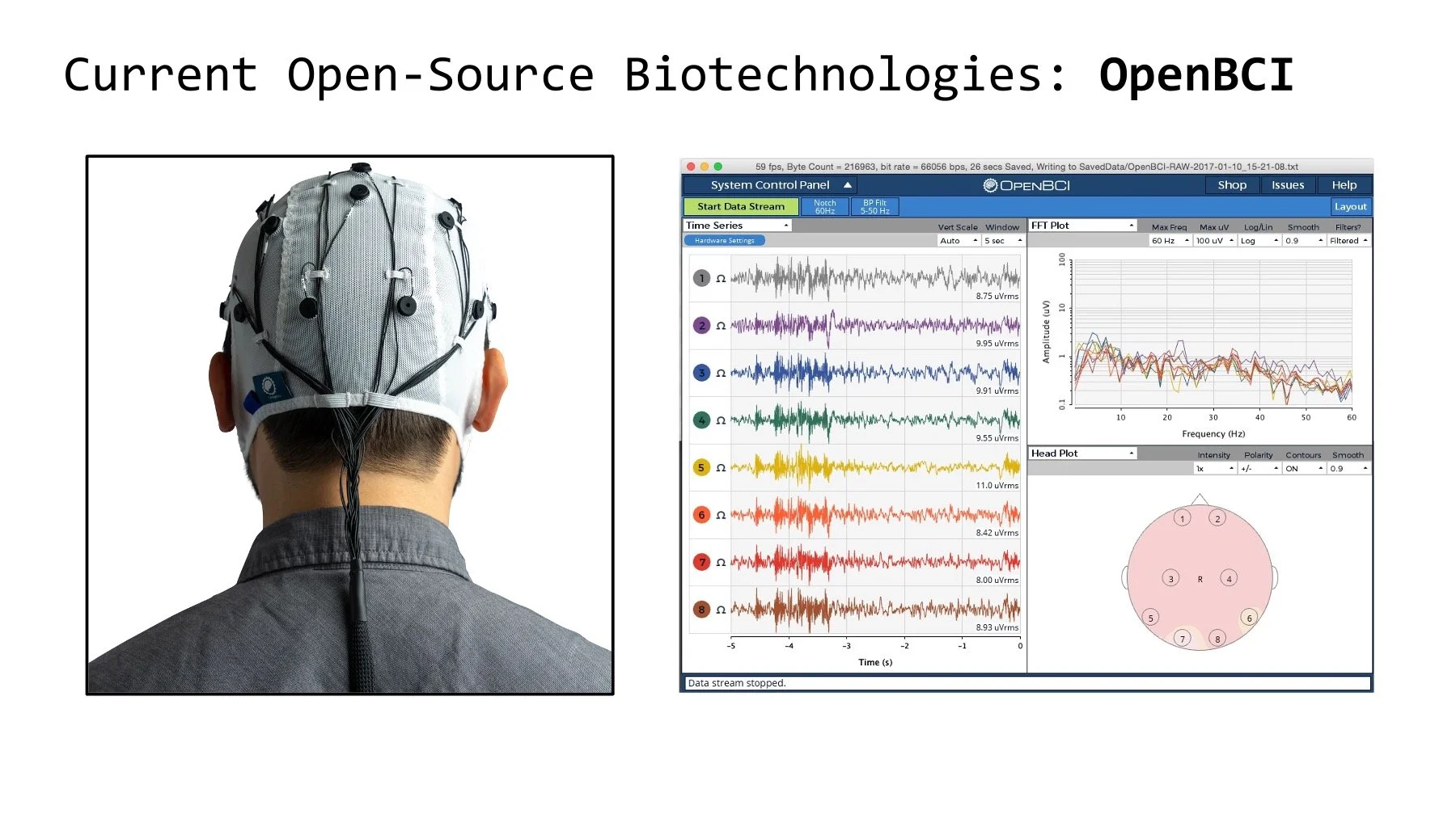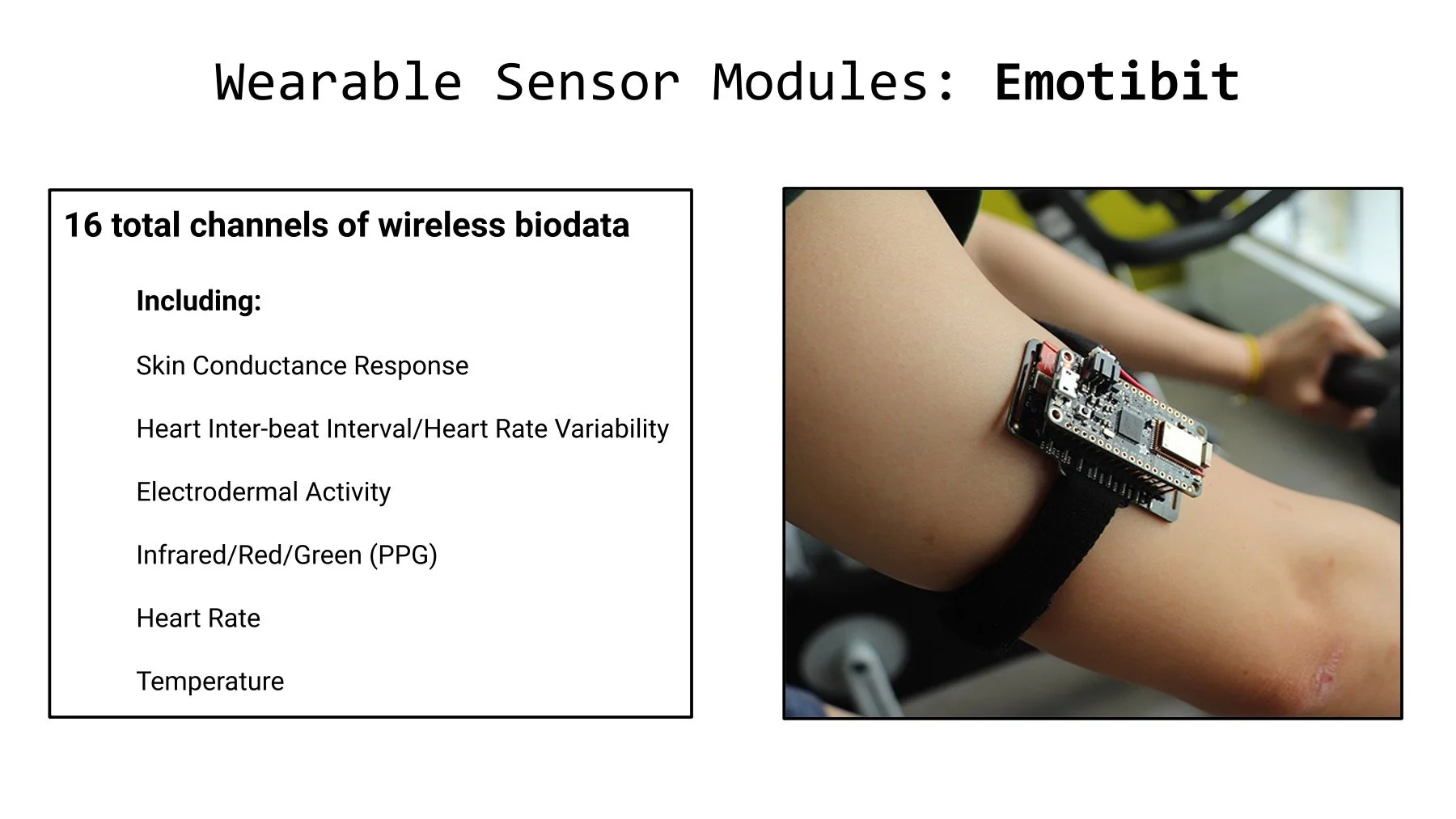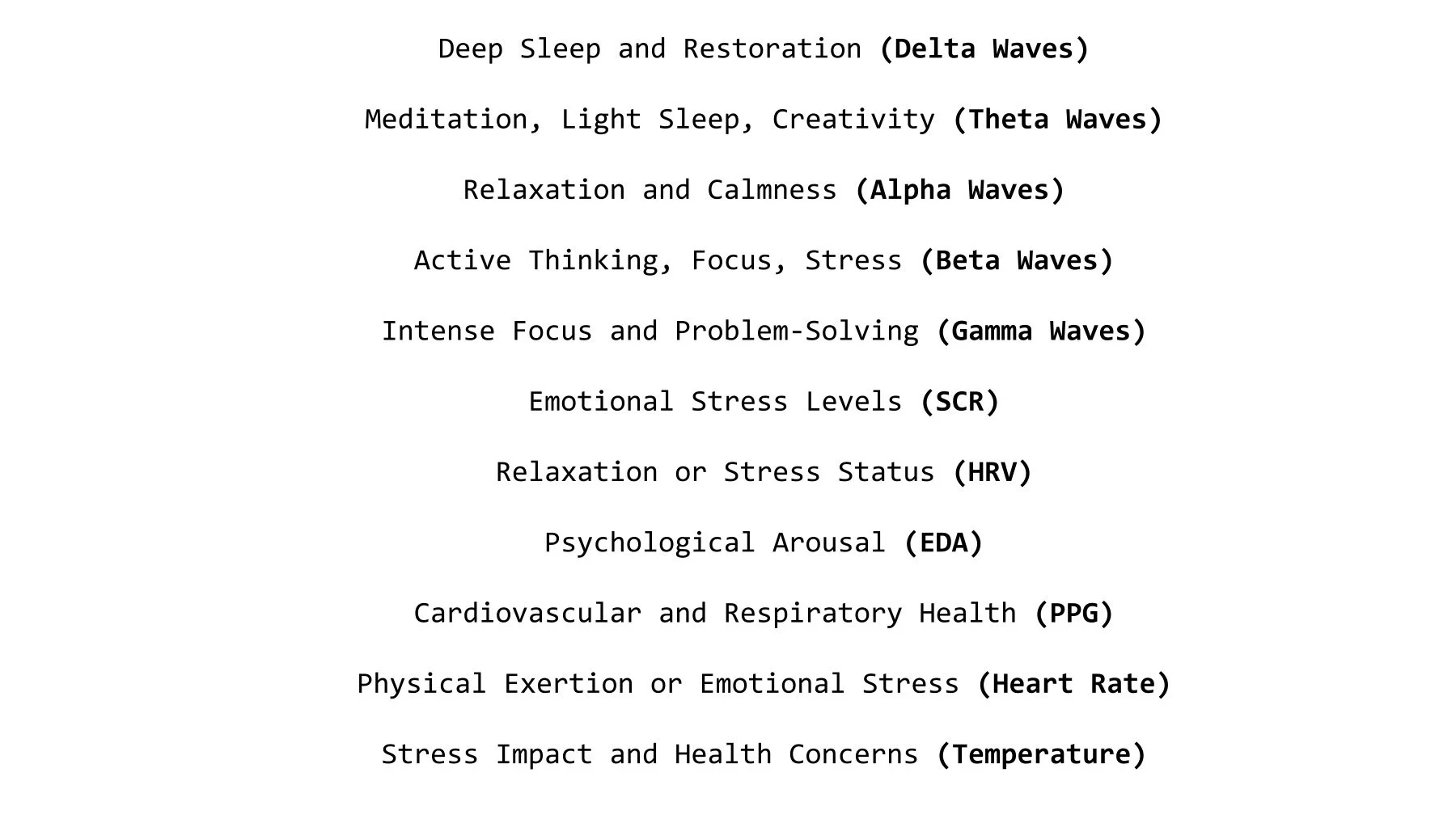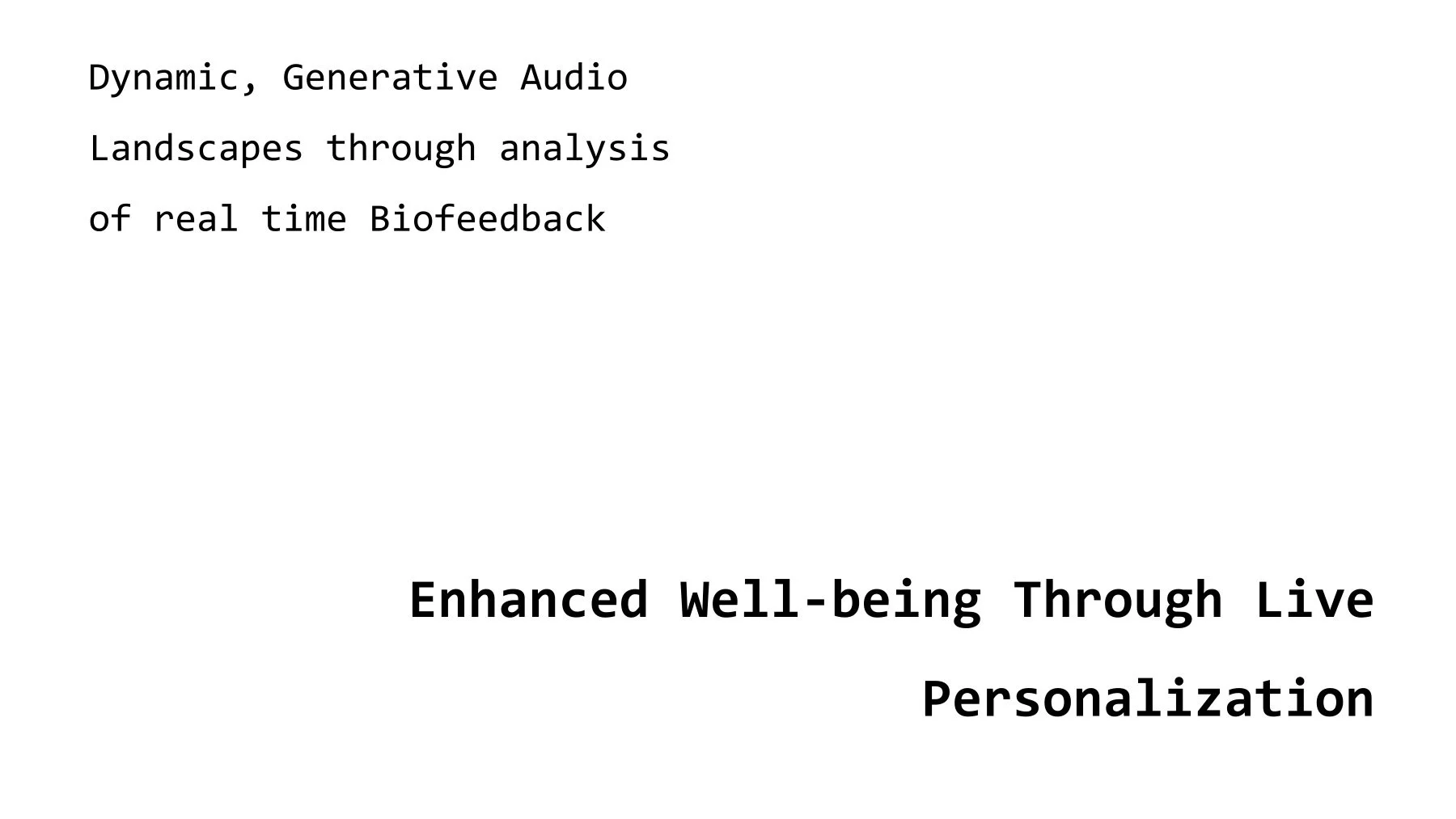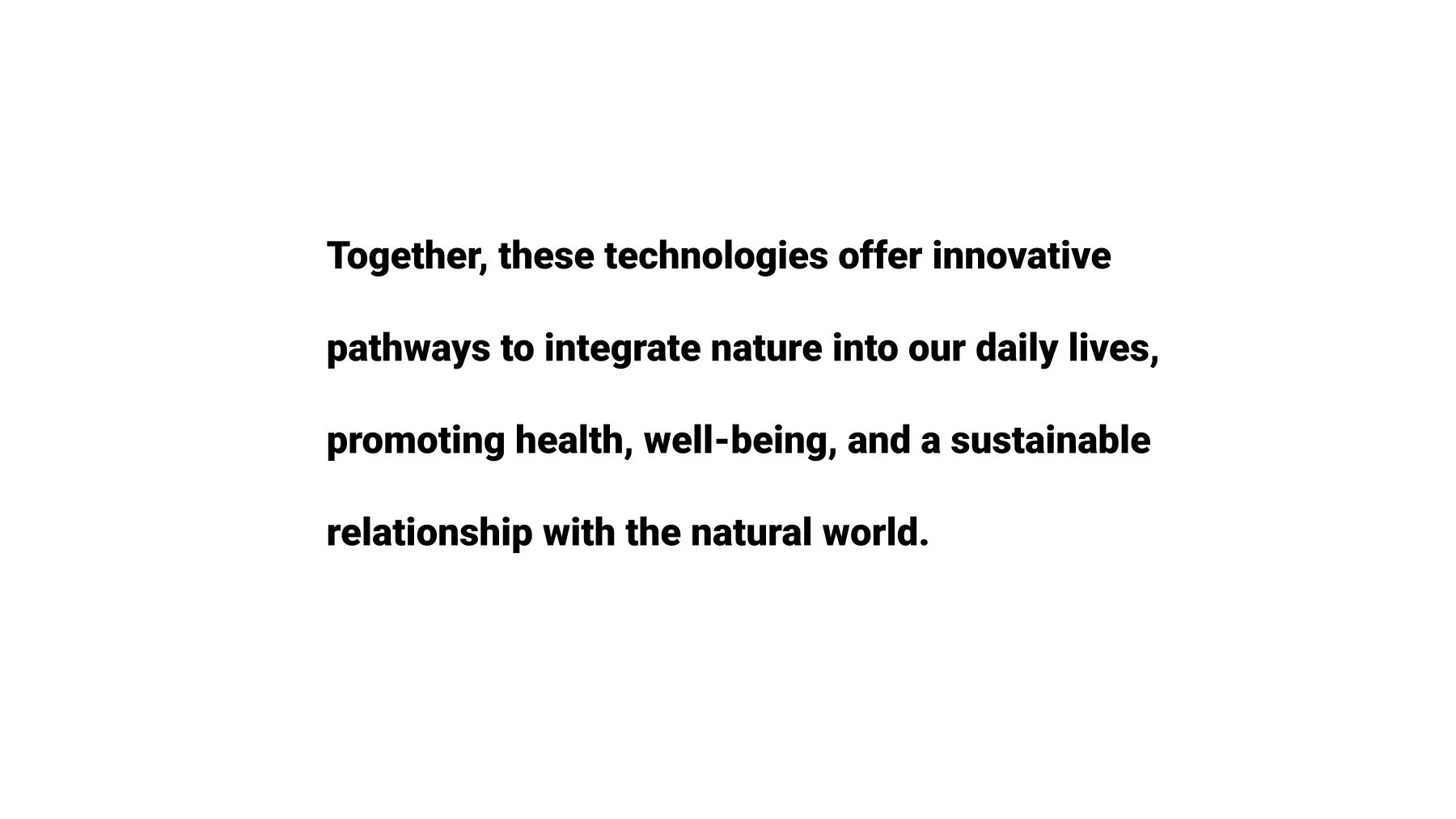
Biophilic Ambisonics
Biophilic Leadership Summit 2024
Had the honor of presenting this ongoing research at the Biophilic Leadership Summit in March of 2024 in Serenbe, Georgia, a community pioneering New Urbanism and Biophilic Design just south of Atlanta.
↓ Slides ↓
Exploring the Psychological and Physiological Impact of Ambisonic/Binaural Naturalistic Audio
The catalyst for this body of work is Dr. Roger S. Ulrich's 1979 paper, "Visual Landscapes and Psychological Well-Being.” In this paper Ulrich examines how natural and urban environments impact people. His research found that being in nature fosters a positive psychological and physiological response.
Much of Ulrich’s research serves as the foundation of the Biophilic movement. I will be presenting the preliminary findings and foundational multi-channel soundscapes at the Biophilic Leadership Summit this March outside of Atlanta in a community called Serenbe.
As spatial audio becomes more and more accessible I am curious to investigate if naturalistic ambisonic and binaural audio has a similar positive impact and how we can utilize open-source biodata to quantify the biophilic effect to generate personalized soundscapes in real time.
Field Recordings
Goals:
capture immersive, stereo field recordings
record with as little artificial sound as possible
minimize post production
I eventually settled on an ORTF recording style as it captures two mono channels I then can process into multiple spatial formats.
The current arranged pieces are ~ 55 minutes long.
Select Preliminary Naturalistic Compositions
This ~ 10 minute sample was composed and mixed in 6.1 multichannel system with Ableton/MAX and then processed to stereo binaural utilizing Dear Reality’s dearVR pro 2 VST. I am still working out the best work flow as I continue to increase the quality of the masters. In the pursuit of increasing the level of immersion I have also begun working with the Envelope as well as the IEM plugin suites.
Aside from B-format ambisonic encoding (which at that length results in a massive file) I haven’t found a convenient, efficient way to distribute the long form multichannel files. Because of this, the pieces are currently site/system specific. The ultimate goal with this technical section of the project is to shift away from pre-arranged ambience and push towards generative, naturalistic, B-format ambisonic soundscapes as this would increase both the longform immersion (no looping) as well as the accessibility/compatibility.
Biofeedback/EEG & Documenting Participant’s Physiological Response to Naturalistic Soundscapes
Utilizing emerging open source biodata sensor modules and EEGs, capturing real-time biodata as participants utilize the naturalistic soundscapes.
Currently collecting data via OpenBCI’s Emotibit & EEG.
Vision and Future
Looking forward, I hope to utilize a large dataset of field recordings and a generative AI in tandem with the live stream of biodata to generate the naturalist ambience, crafting personalized soundscapes based on participant biofeedback.
